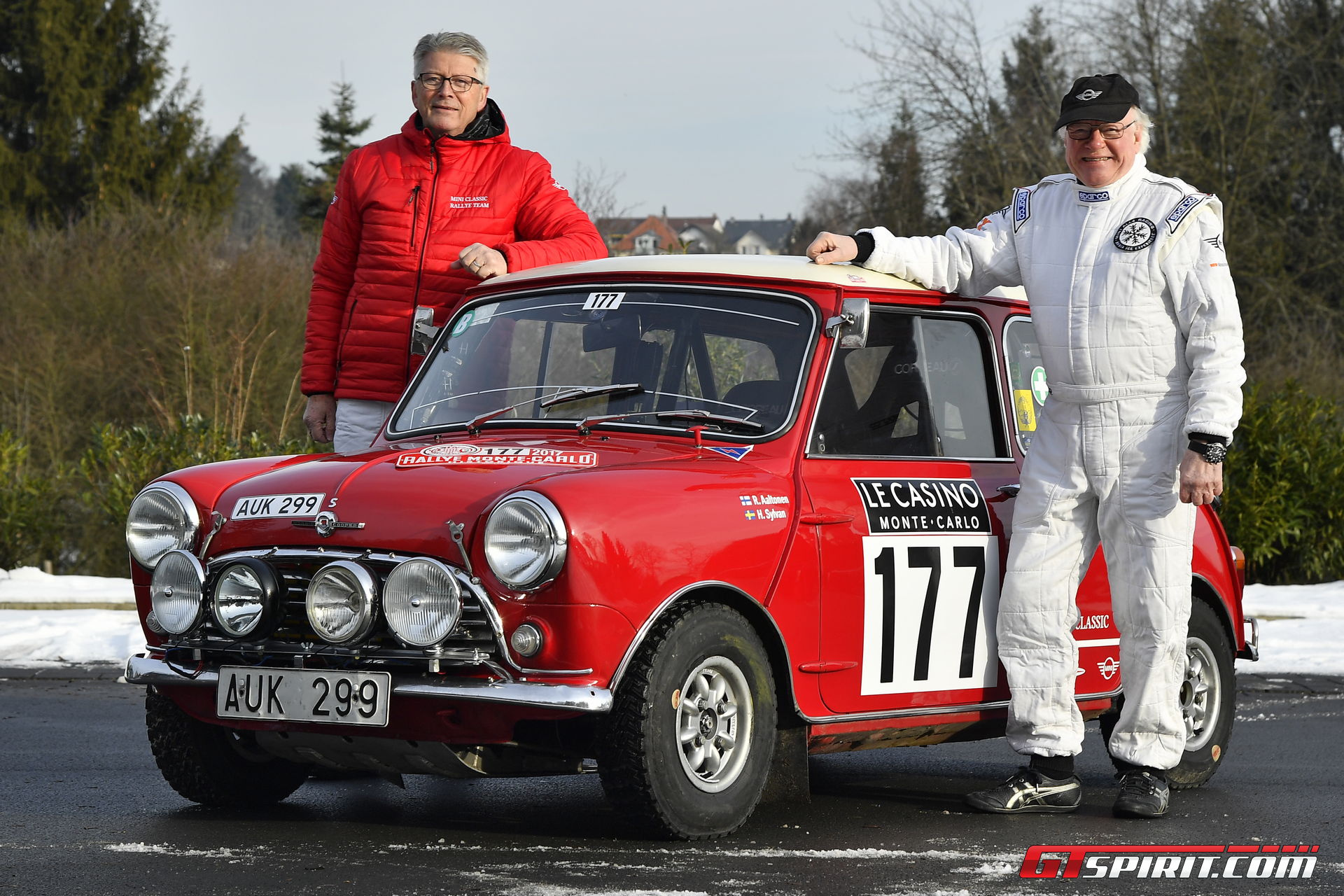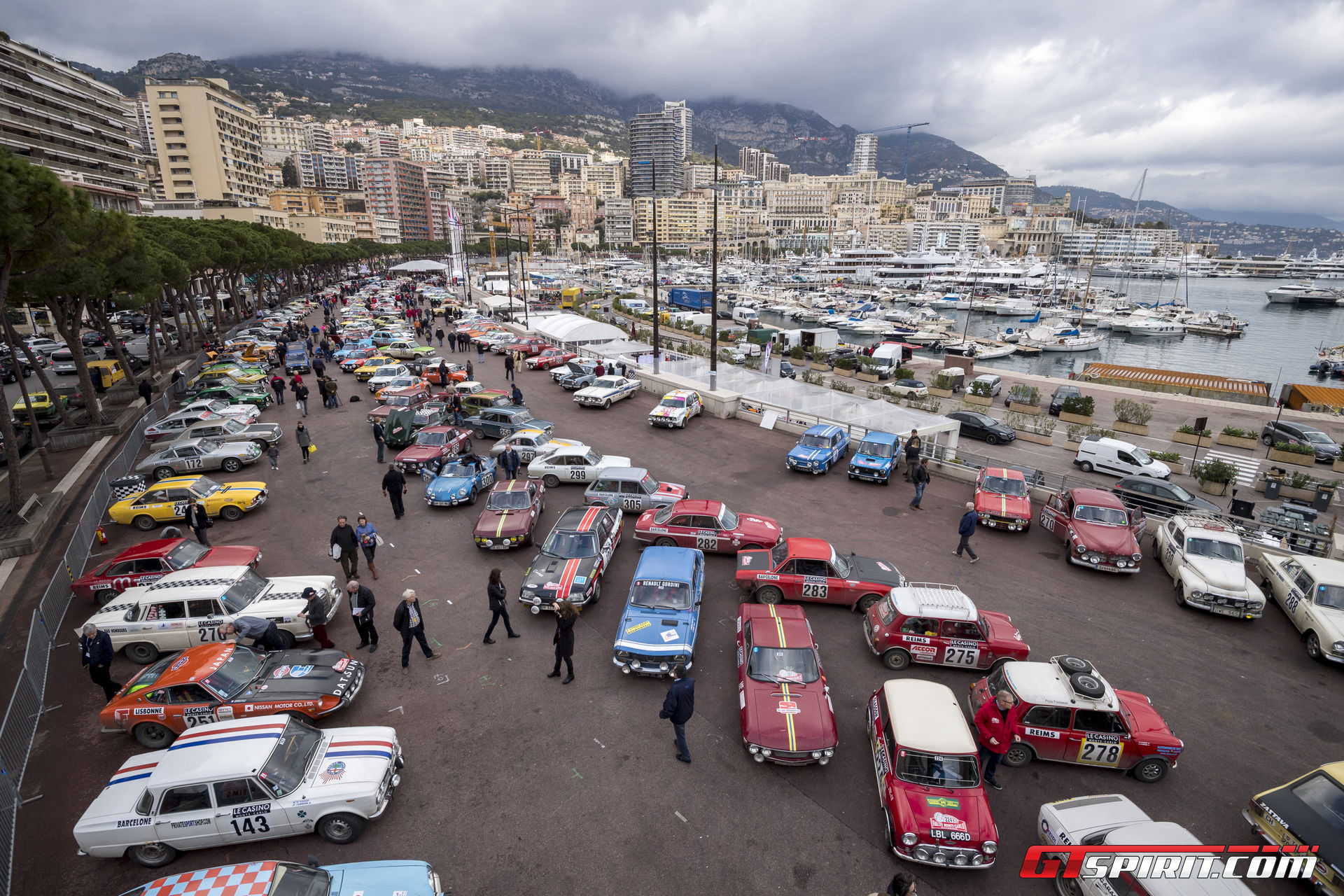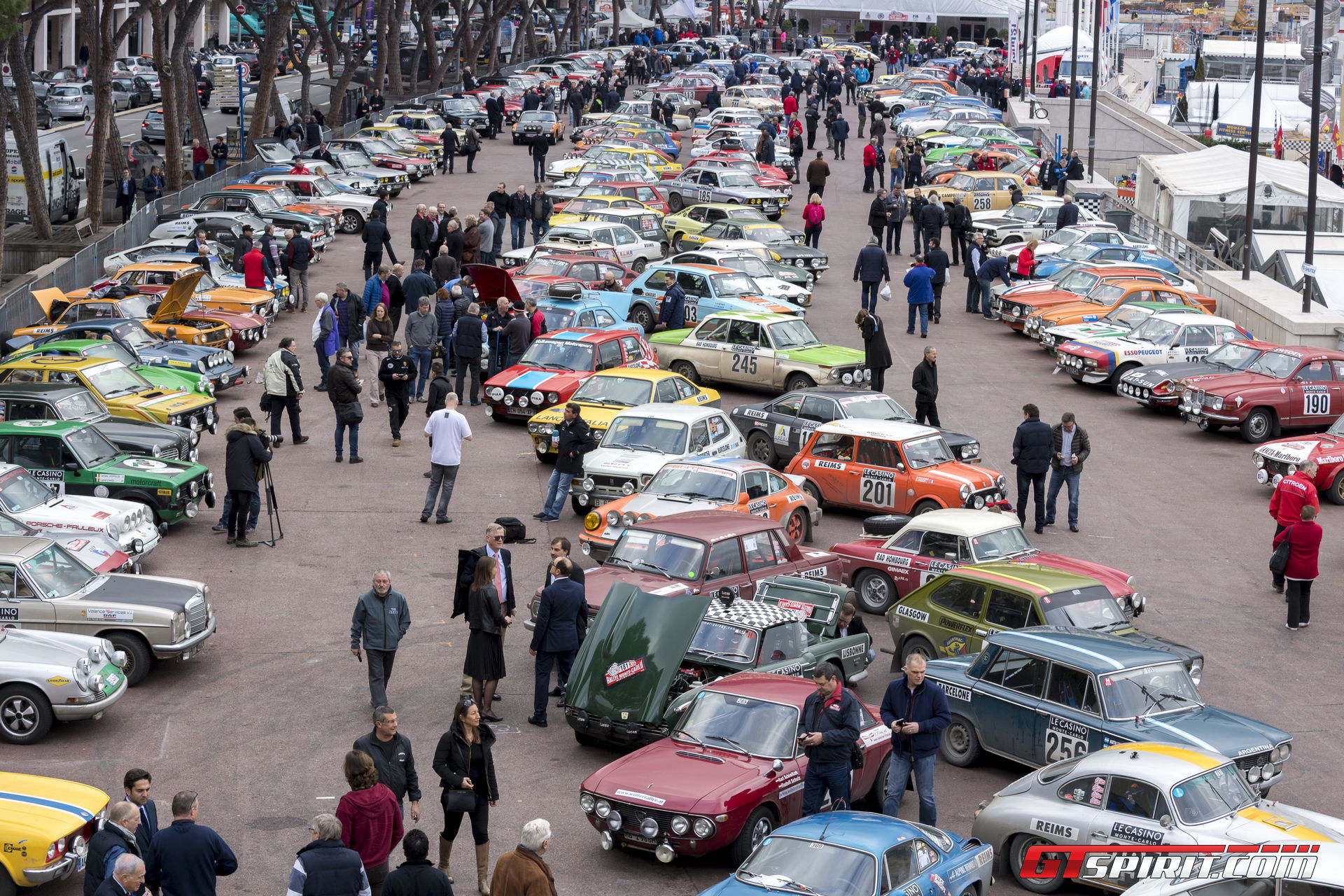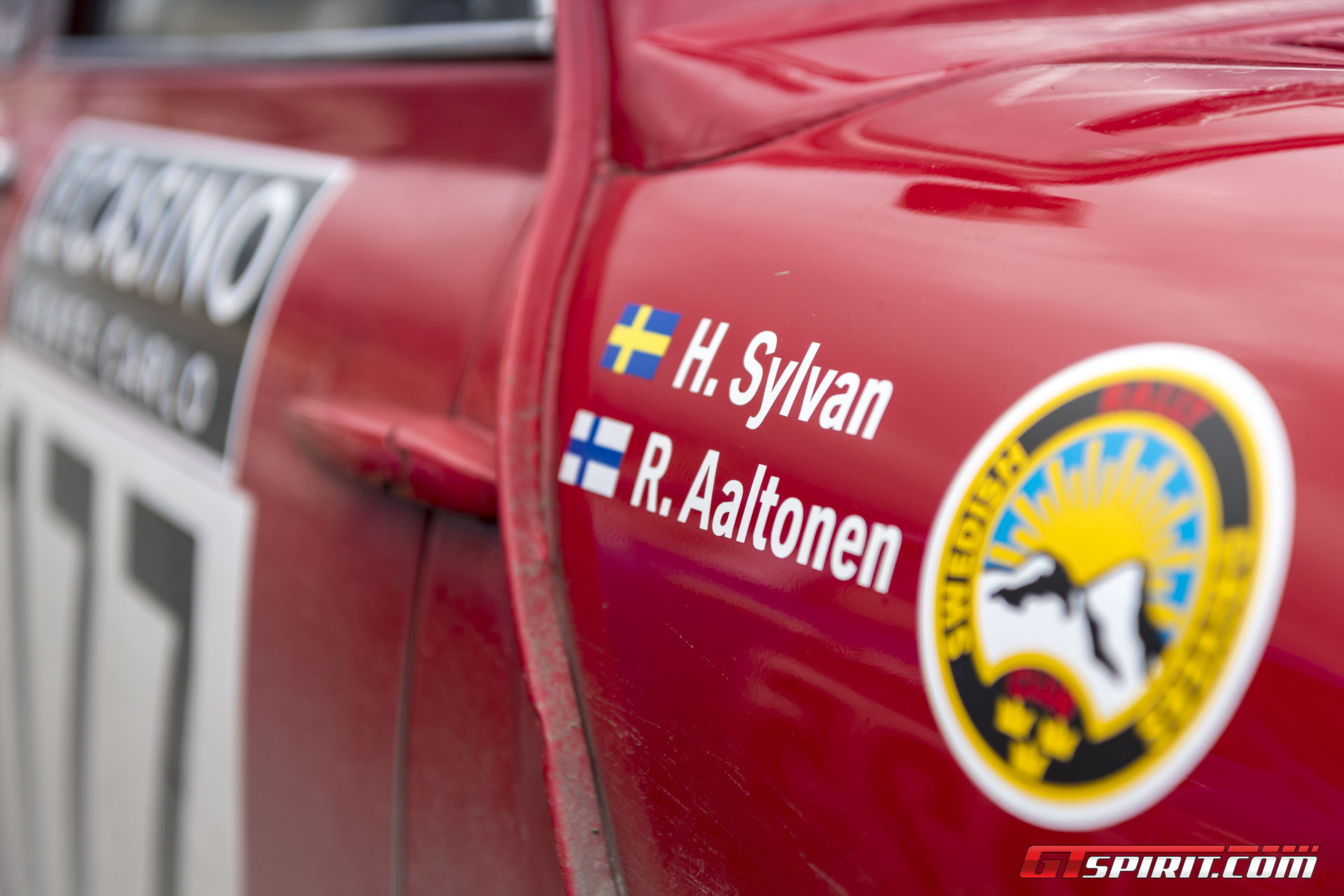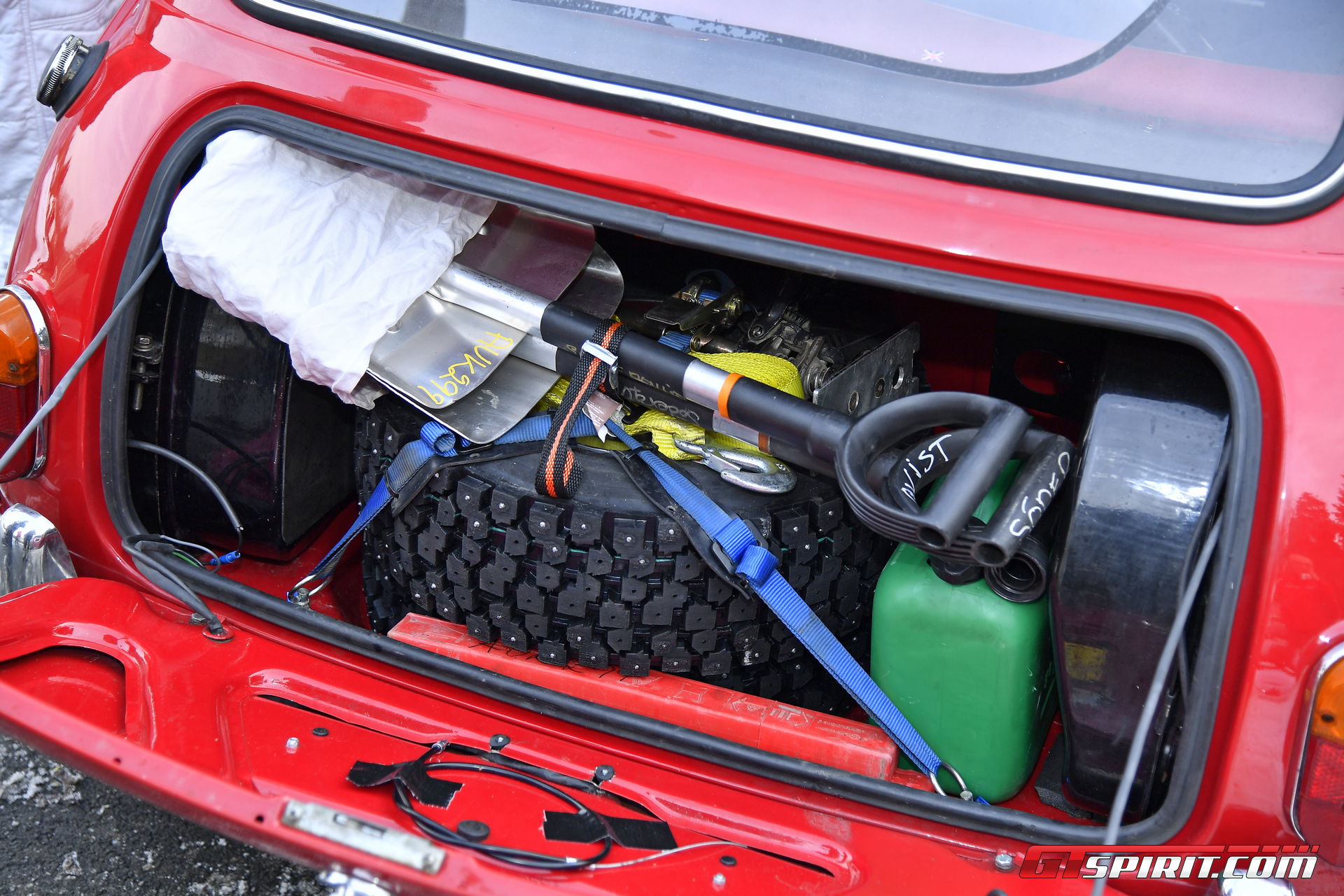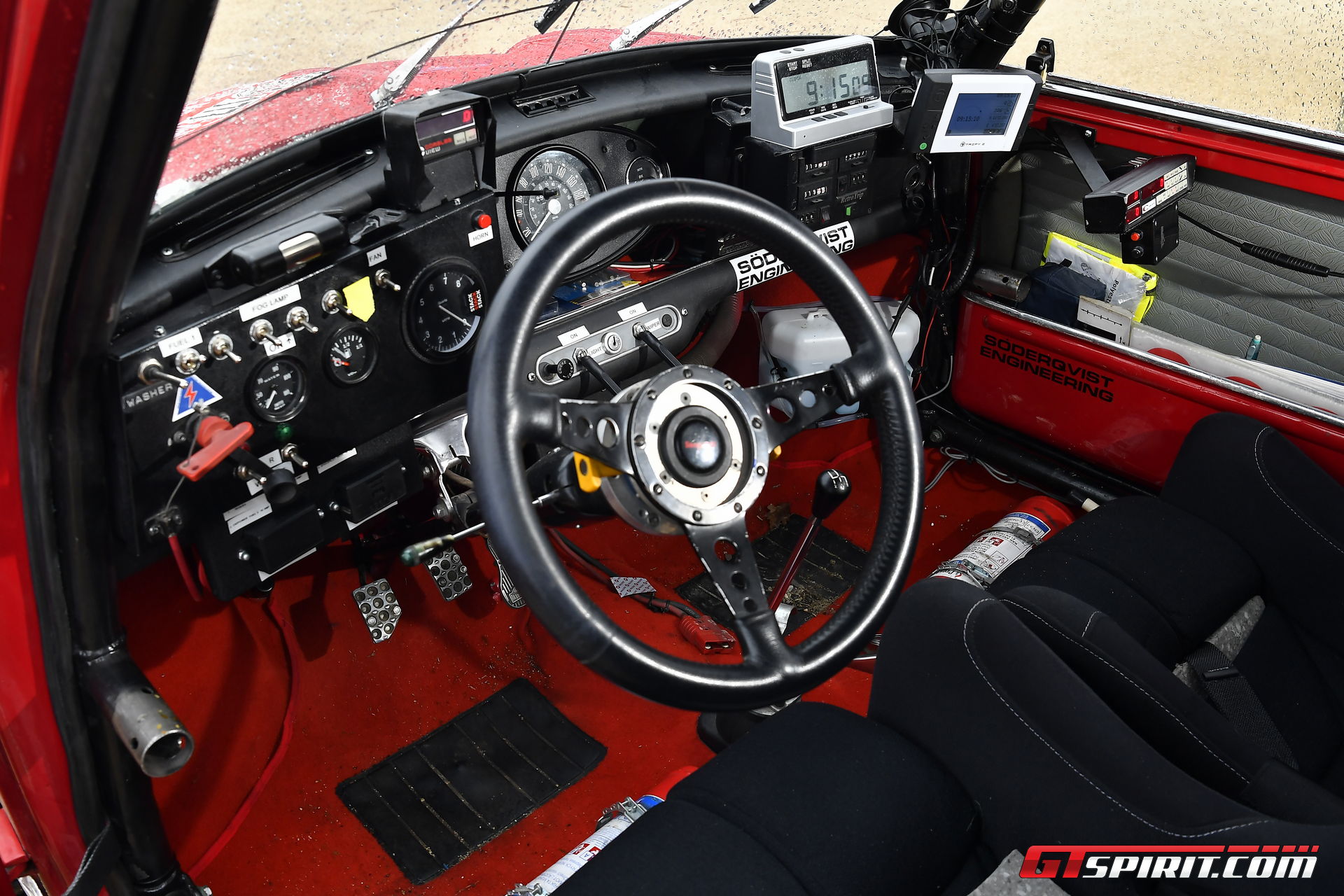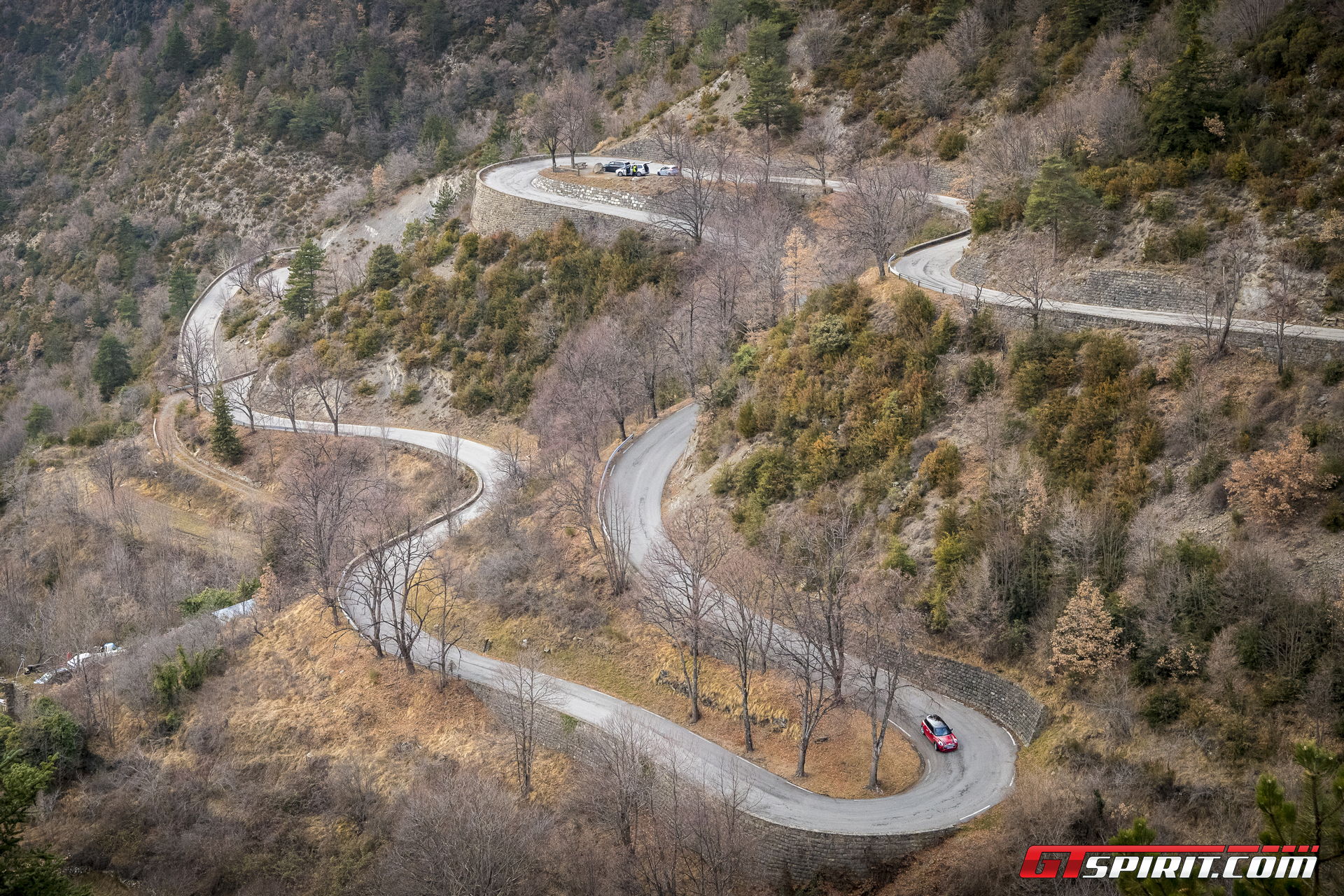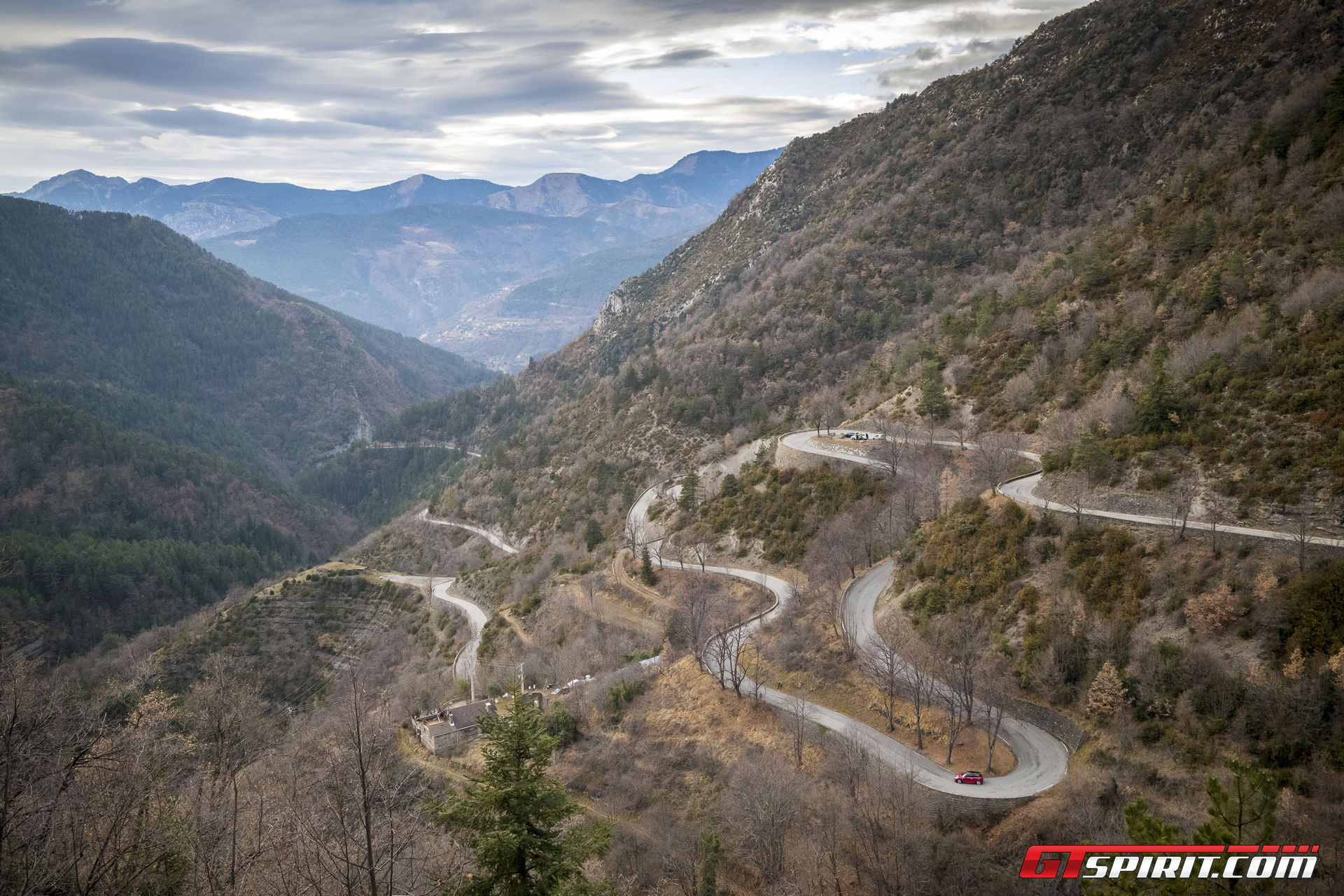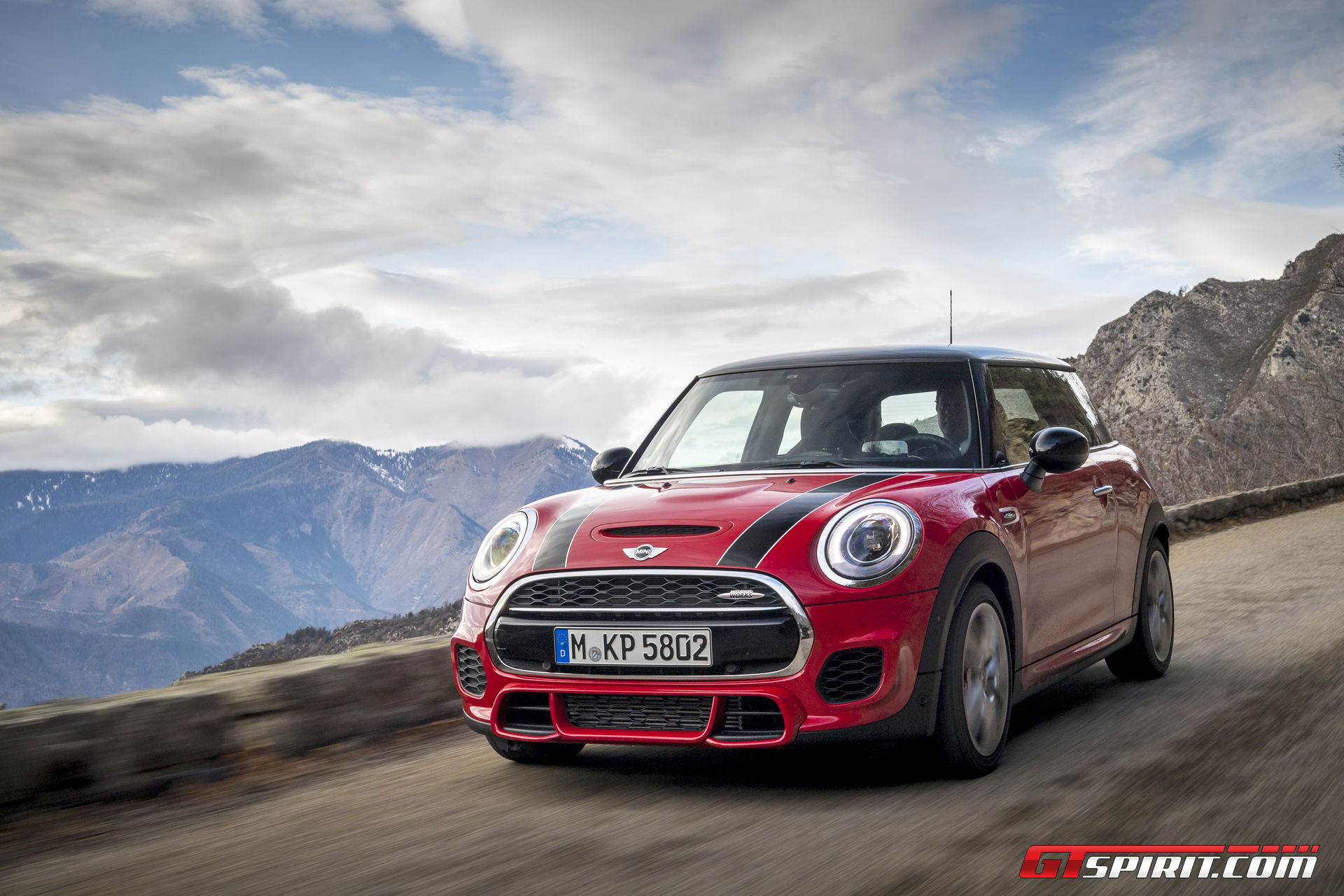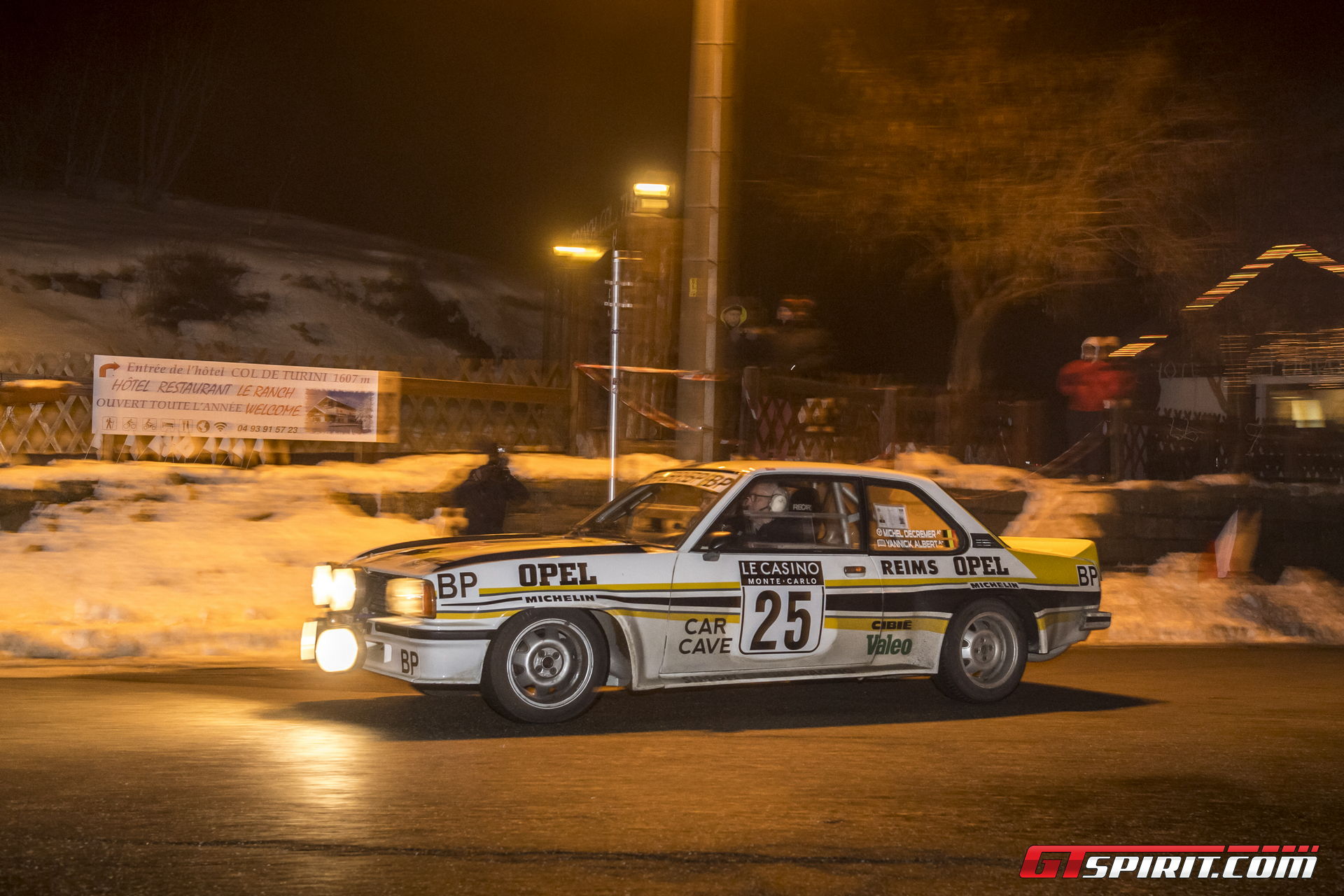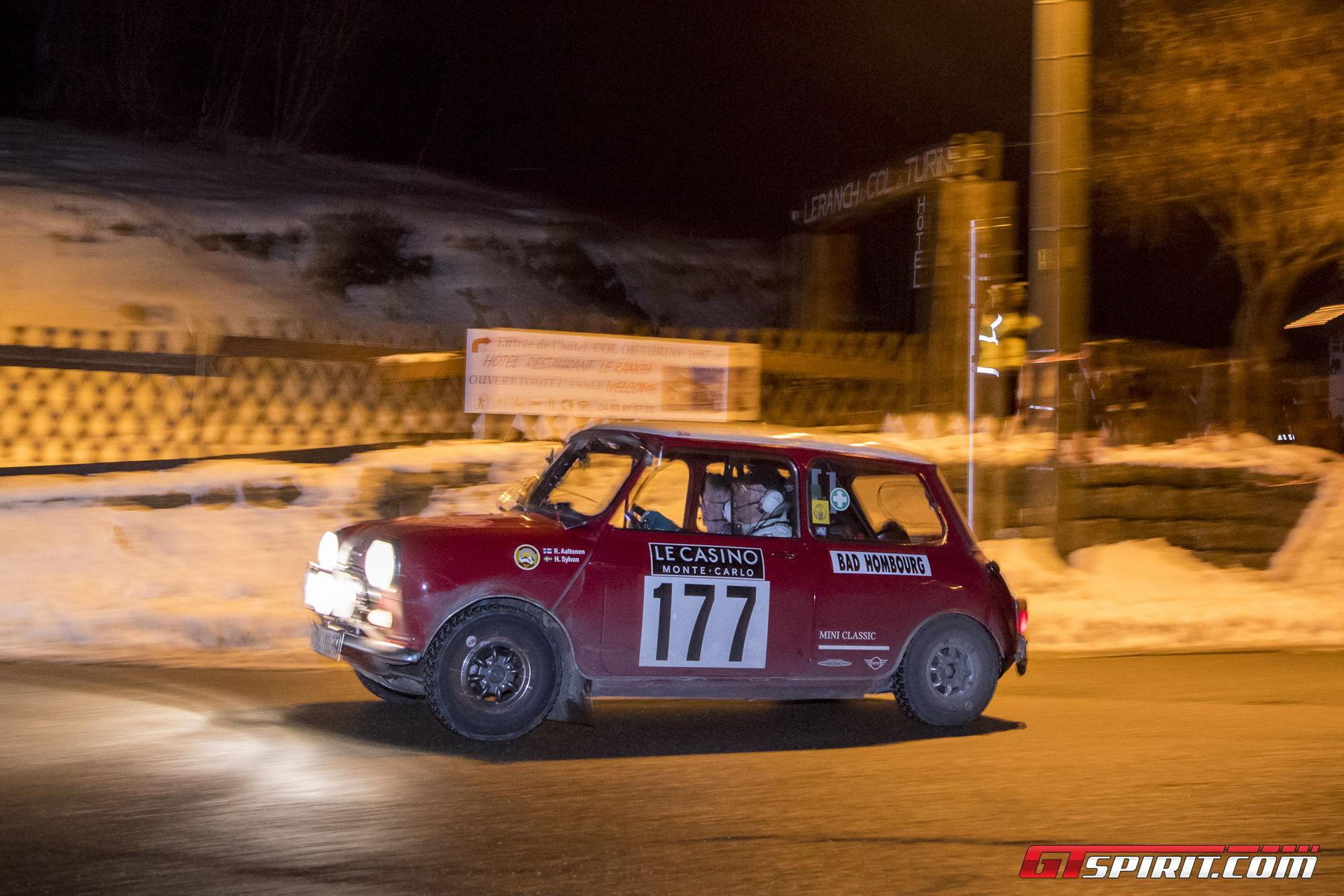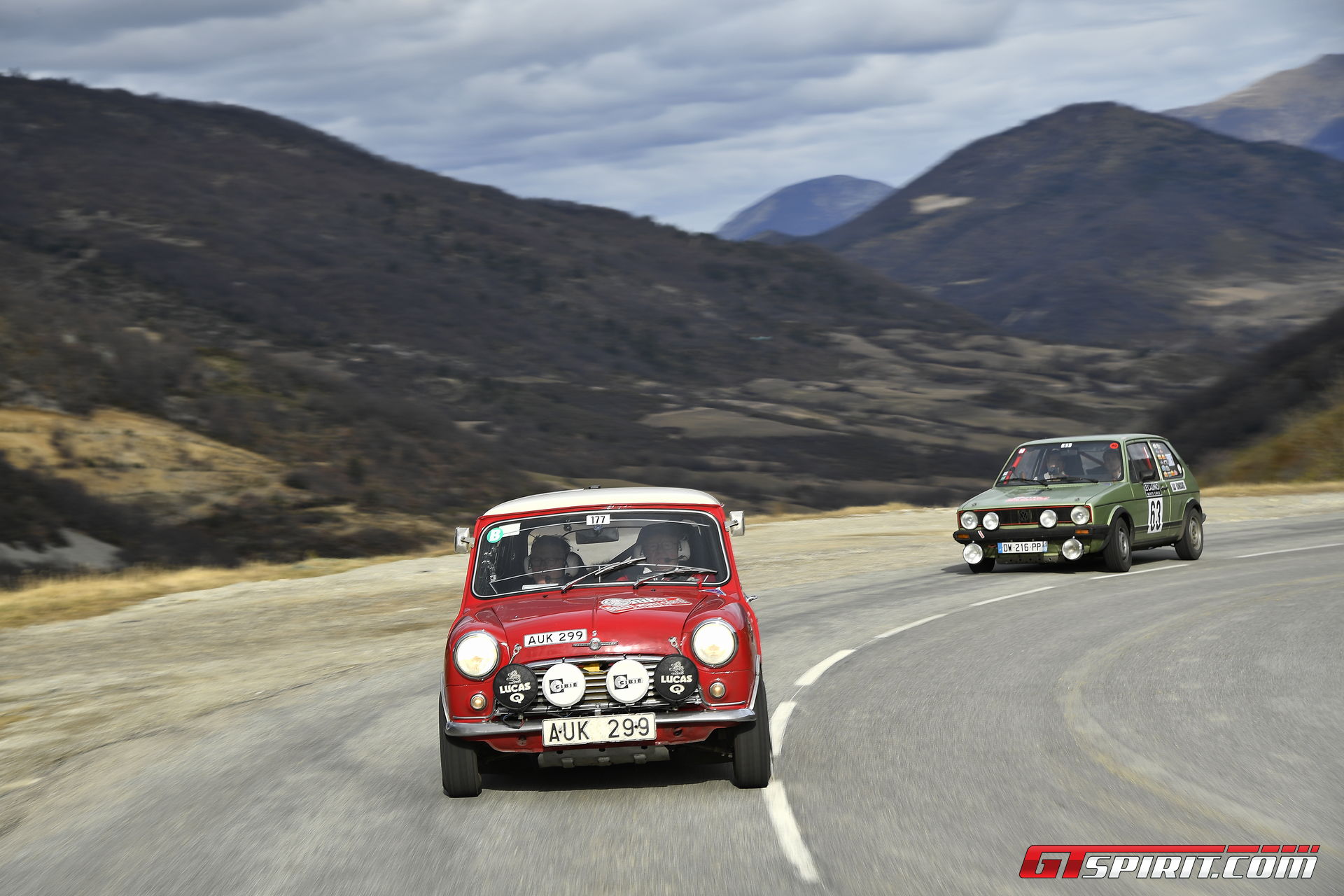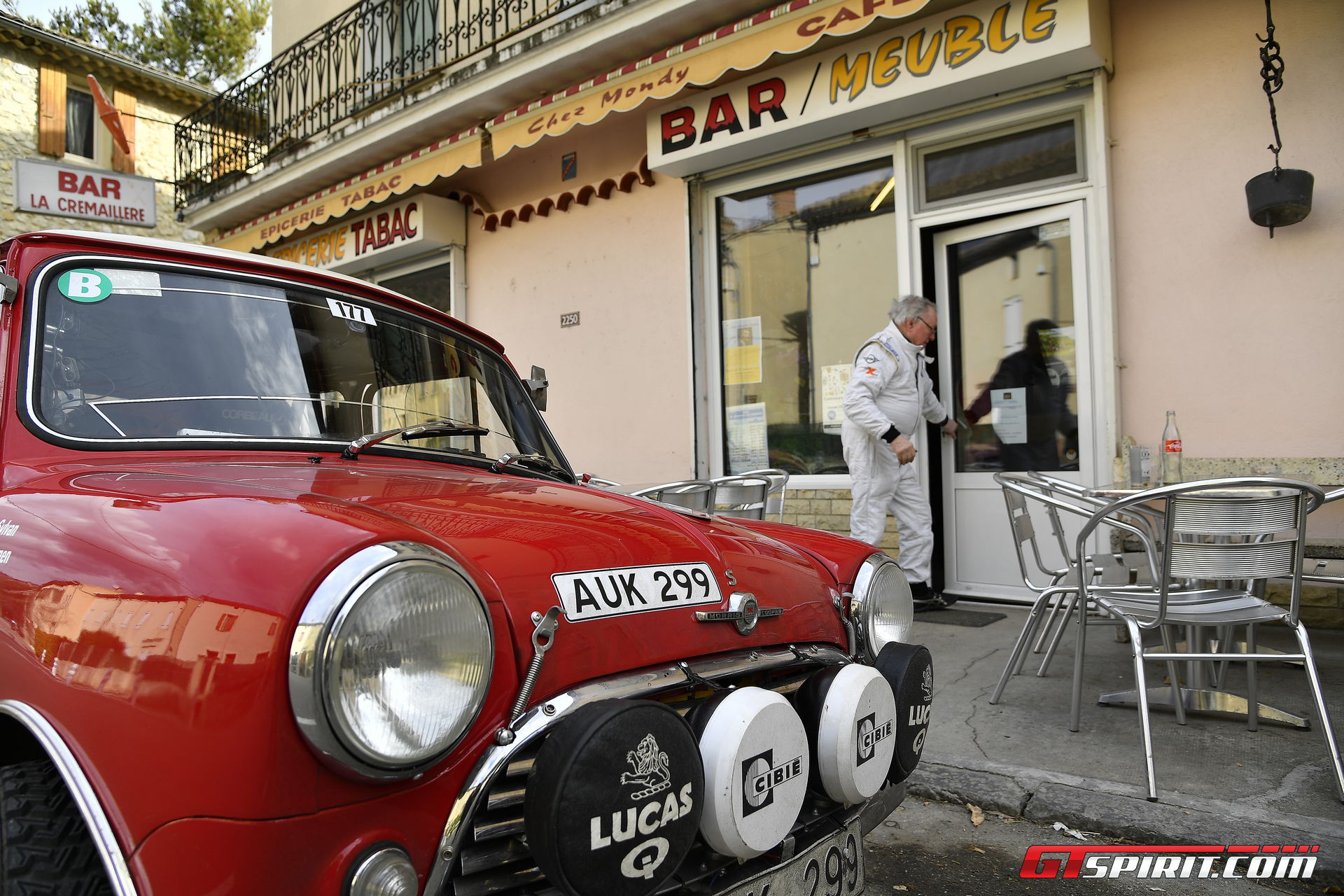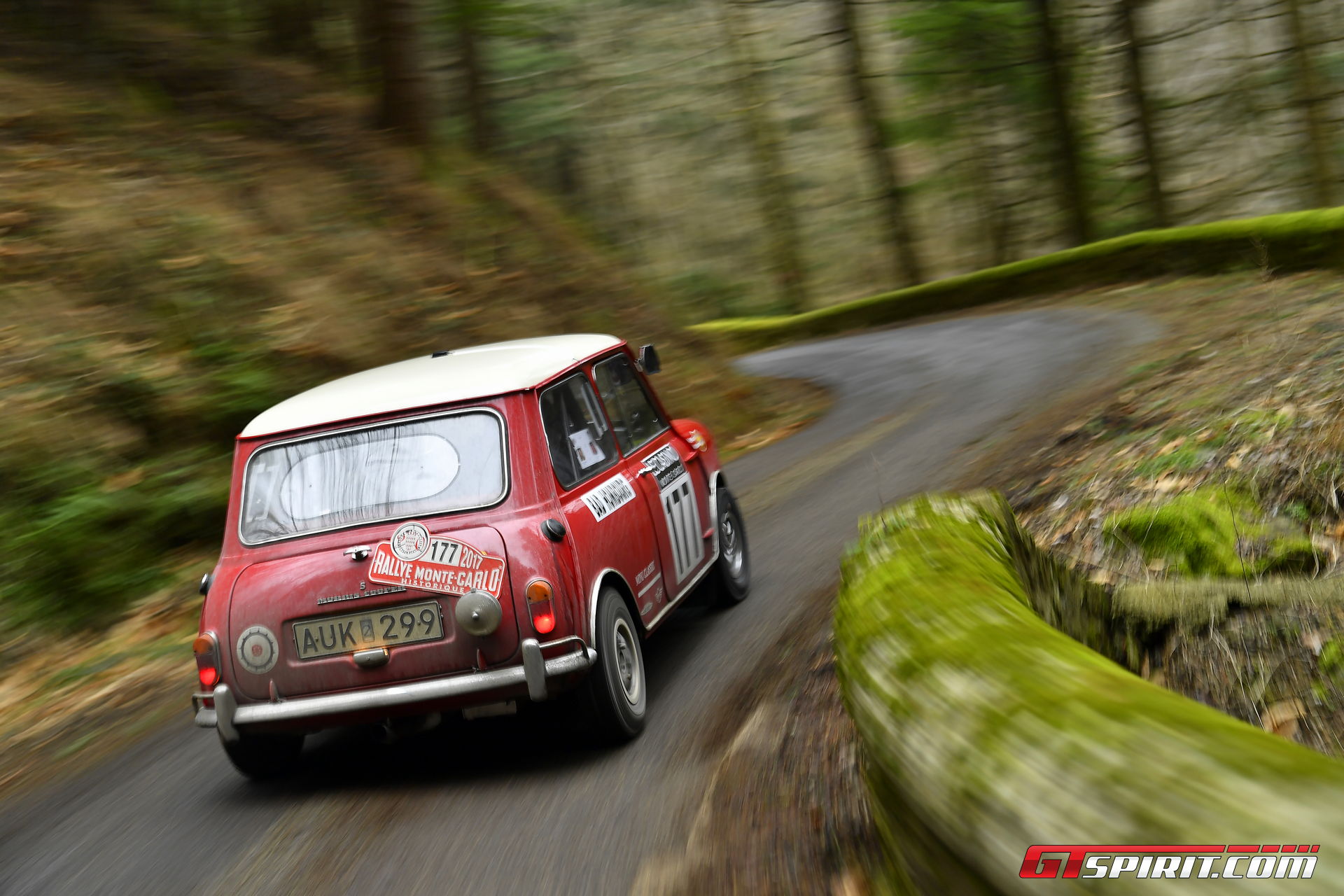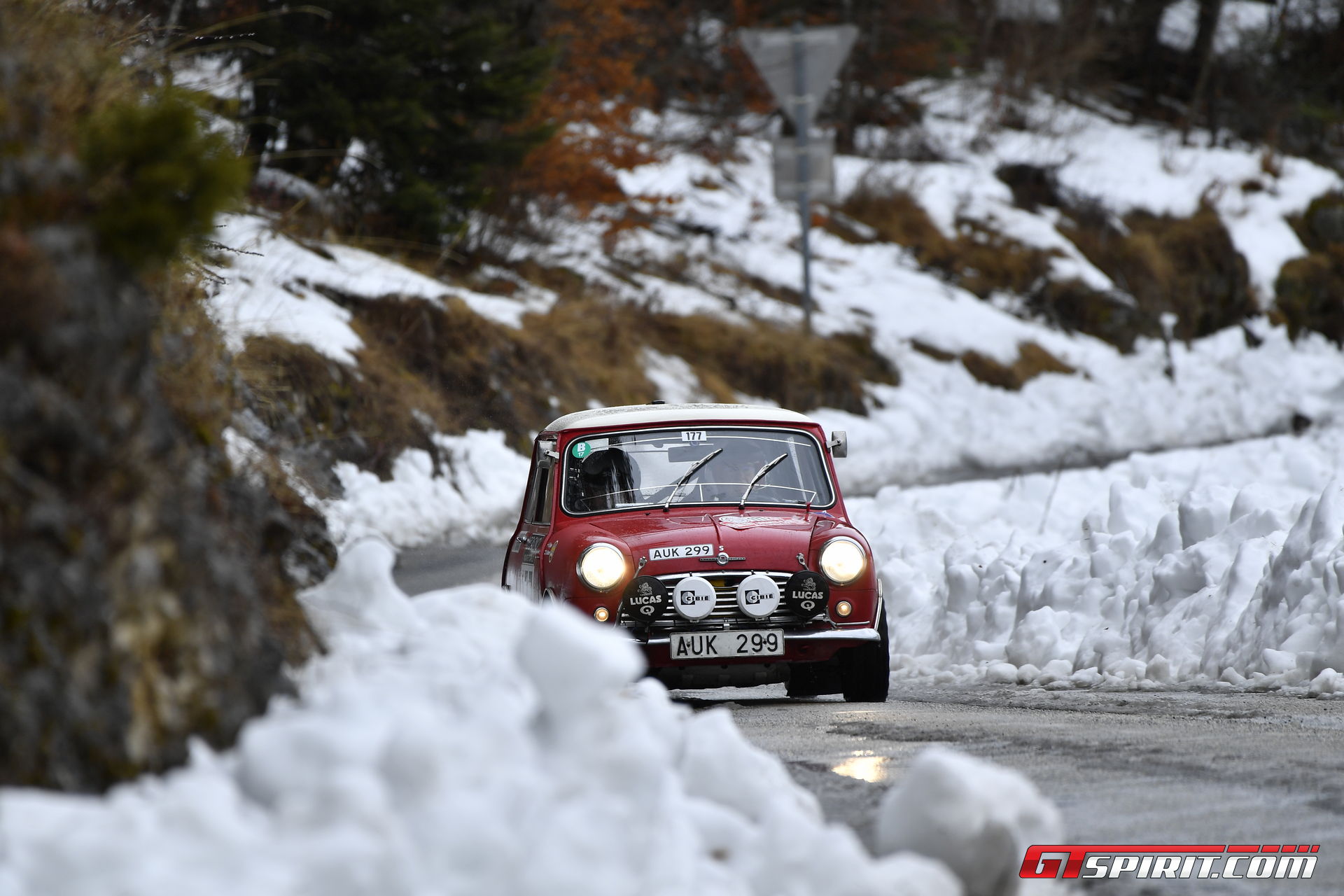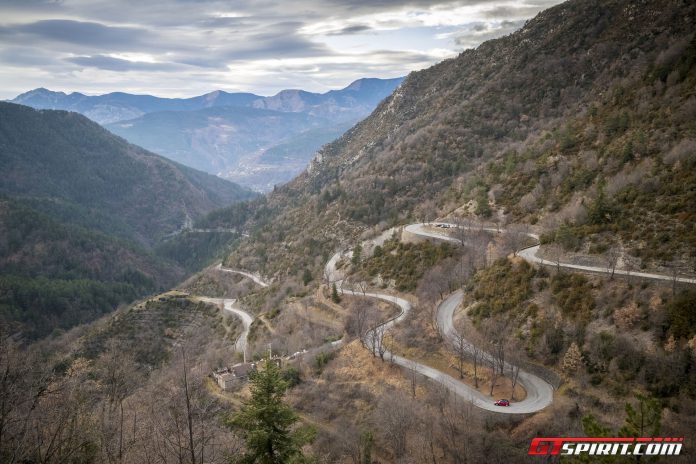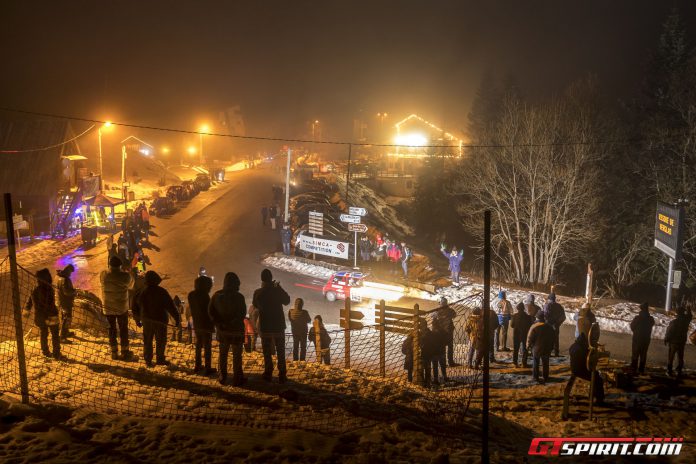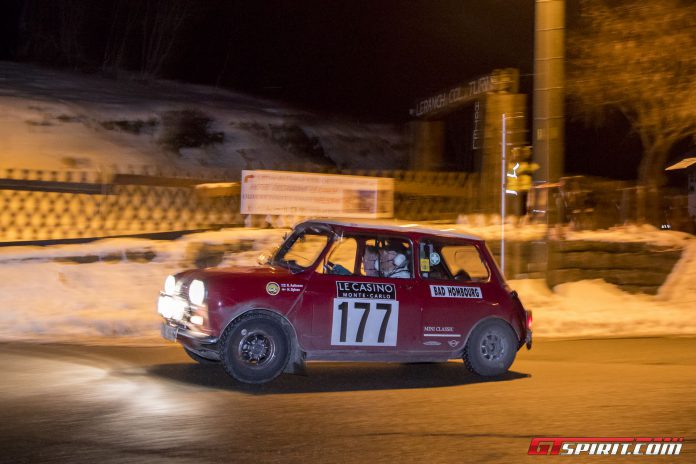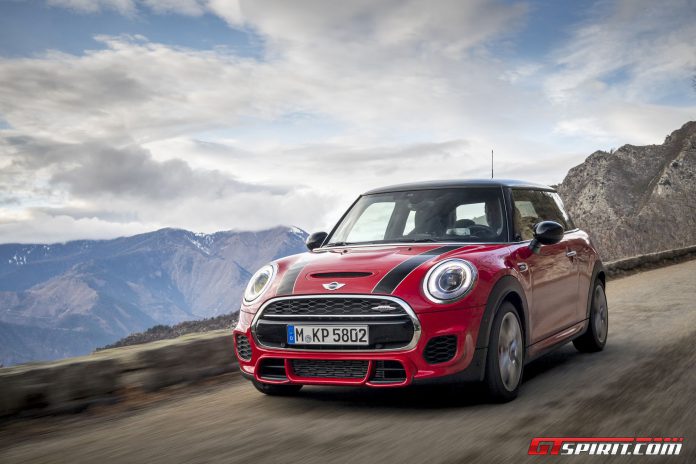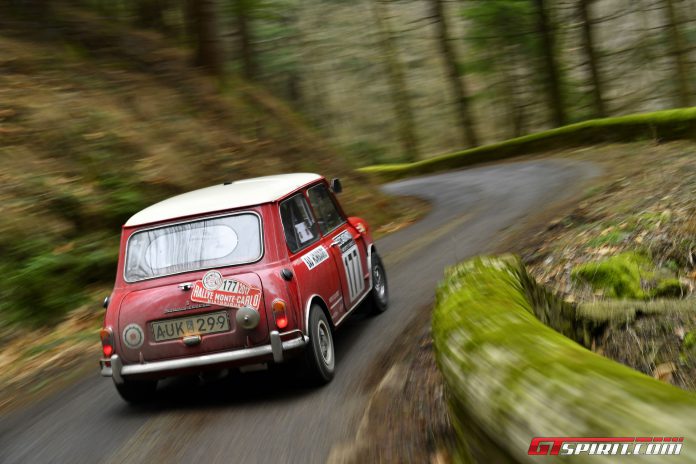50 years ago Mini celebrated a spectacular victory at the Rallye Monte Carlo. This year the driver of the winning Mini returned to Monte Carlo to participate in the Rallye Monte Carlo Historique. The driver is none other than Finnish rally legend Rauno Aaltonen. Born in January 1938, the now 79-year old returns to the famous roads of the Rallye Monte Carlo with a fully prepped Mini Cooper S rally car belonging to a Swedish collector.
We joined Rauno Aaltonen in Monaco to relive part of the famous Rallye Monte Carlo with him. The annual rally is organised by Automobile Club de Monaco and first took place in 1911 initiated by Prince Albert 1 of Monaco. The historique rally starts at various different cities in Europe and follows challenging routes to Monte Carlo. In 1911 the 20 participating teams started from Berlin, Boulogne-Sur-Mer, Brussel, Geneva, Paris and Vienna.
The pinnacle of the Rallye Monte Carlo is the timed section from La Bollène-Vésubie to Sospel over the Col de Turini pass road. This 30 kilometer stretch includes many hairpin bends, narrow cliff side passages and often challenging weather conditions. This particular part of the rally played a key role in Rauno Aaltonen’s victory in 1967 but more on that later.
When I met Rauno for the first time in the harbor of Monte Carlo I asked him what it is like to be back behind the wheel of a 1960s Mini and what has changed in the last 50 years. “In general driving the Mini Cooper is hardly different now than it was in 1967. However the car is a bit better and the tires provide more grip than they used to. But the Col de Turini is still very much the same, it is just a little less bumpy and a bit wider here and there.”
Although the regularity Rallye Monte Carlo Historique 2017 is not the same as the as-fast-as-possible Rallye Monte Carlo in 1967 Rauno and his Swedish co-driver Hans Sylvan approached the event very much in the same way. Back in December they already went down to France to pre-drive the timed sections and take pace notes. Mini was among the first to use pace notes in the 1960s and Rauno still uses the same principle today with his co-driver calling out corners and special features coming up ahead allowing Rauno to go as fast as possible. Talking to Rauno you can tell he still enjoys rallying today as much as he did back in the 1960s.
After some initial set backs on the first days of the Historique Rallye this year he is back in the middle of the field and very excited to drive the Col de Turini again. To witness it first hand I take a modern Mini John Cooper Works up the famous pass road ahead of the night stage. Driving up from Nice through the valleys and gorges the temperature drops sharply from the mild climate at the Cote d’Azur to the snow covered mountains in the French Alps. This weather change has always played a critical role for the participants of the Rallye Monte Carlo. The start of the stage could be perfectly dry but half way up the Col de Turini the drivers could be faced with snow and ice covered roads.
Luckily for me and Rauno the roads today are clear and the specially made studded tires can remain in the support vehicle unused. The higher I get the more beautiful the view becomes. At the same time the road gets narrower and narrower with some parts where there is no room for overtaking or passing oncoming traffic. During the rallye other traffic is blocked but I have to be very aware of other cars and trucks coming down the other way.
At the top of the Col de Turini you will find a handful of houses including two hotels and a restaurant. In Summer you can take a scenic road further up from here but the road is closed in winter. The local restaurant is almost like a Rallye Monte Carlo museum with the walls plastered with memorabilia and photos of the legendary rally – much like the famous Pistenklause at the Nurburgring.
Just before midnight we can hear the first cars of the historique rally – which sees everything from late 1950s until 1970s cars take part this year – roar up the twisty mountain road towards us. The head lights illuminate the trees and the crowd before making a slight right followed by a sharp left down into the darkness on the other side of the mountain. In total there are 300+ cars taking part this year and they start every 30 seconds based on their start number. Rauno has number 177 so he should pass around 1:20am. In the meantime dozens of Porsche 911s, classic BMWs, Mercedes-Benzes and Fords race past us until we see the distinct Mini Cooper headlights pop up – it is him!
At this moment I remembered a story I heard years ago. Allegedly during the 1967 Rallye Monte Carlo the winning car had missed a hairpin and went straight of the road – yet still won the race. Was it true?
The story wouldn’t let me go and as I fell asleep with the sound of the last participating cars racing past my hotel room I was determined to ask Rauno about it the next day.
The next morning I once again got behind the wheel of the new Mini John Cooper Works and drove down the last part of the famous Col de Turini on the way back to Monte Carlo. All the participating cars were lined up in the harbor of Monaco where the paddock is during the annual F1 race. A great sight seeing all the classic rally cars lined up with the yachts in the harbor and the ever changing skyline of Monaco as backdrop.
I found Rauno at a cafe nearby and after an interesting discussion about left foot braking (“not necessary for rear wheel drive cars – but a must for front-wheel drive cars”) and heel-and-toe (“it is like playing piano with your feet – I even had my hip operated once because I couldn’t move my feet fast enough anymore”) it was time to pop the question and ask him about that rumor about the 1967 rally victory.
Once I asked it Rauno first smiled and then said “Yes, it is true!” He then started to explain the story; “It was the last part of the rally and I was ranked about 30 seconds behind the Porsche 911 in the lead, but having been disqualified the year before I was determined to win this year. The weather conditions were terrible, there was a snow storm and visibility was very very poor. When I reached the top of the Col de Turini my co-driver said you are 2 minutes down (compared to our normal average time when the road is clear).”
“A few hundred meters after clearing the pass I came up to a hairpin quite fast in third gear and hit the brakes. But there was a patch of ice and the car just slid. On the outside of the hairpin were some large rocks – now I had to chose: aim for one of the blocks and probably wreck the car or steer between them and possibly die.”
“I chose the latter and remember we flew over the edge. I could see the trees, they were like Christmas trees covered in a thick layer of snow. The initial landing was quite smooth and we slid down a snow covered part of the mountain. I steered the car as well as I could around the trees and large boulders when suddenly there was a big bang. We landed on a road. So I checked with my co-driver if everything was ok put the car in gear and continued. After a few hundred meters we realized we were going uphill instead of downhill though so I pulled the handbrake and we were back on the right path. In the end we finished with a 7 second lead overall.”
For years Rauno and his co-driver kept this secret but now it is so long ago that he doesn’t have to fear disqualification for using an unintentional shortcut anymore.
Rauno Aaltonen still occasionally drives rallies and owns a (rally) driving school in Finland where he teaches his tricks to students from around the globe.
Special thanks to BMW and Mini Classic for the opportunity to experience the Rallye Monte Carlo Historique up close with Rauno Aaltonen.



